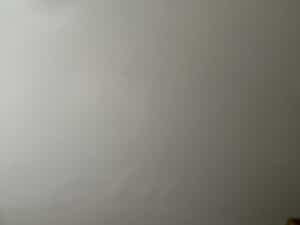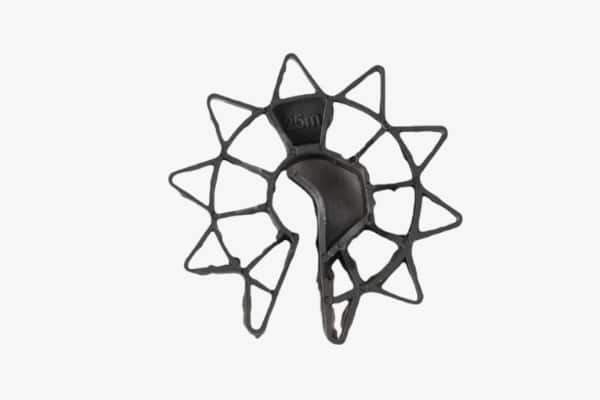The Hidden Dangers of Moisture in Building Walls: A Professional Insight
1. Introduction: Understanding the Importance of Moisture Control in Building Walls
Moisture is a silent and often overlooked threat in the construction industry. Architects, contractors, and builders must be aware of the hidden dangers that moisture can pose to building walls, particularly those made of concrete. Moisture can lead to a host of problems, including mold growth, structural damage, and compromised insulation. In this blog post, we will provide a professional insight into the importance of moisture management and the steps that can be taken to prevent and mitigate these issues. Whether you are a seasoned professional or a homeowner looking to protect your investment, this information is essential for anyone involved in the construction and maintenance of buildings.
2. The Consequences of Moisture in Building Walls: Structural Damage and Health Risks
Moisture is not just a minor nuisance in building walls – it can pose severe risks both to the integrity of the structure and the health of its occupants. Failure to address moisture issues promptly can result in significant structural damage and potential health hazards.
When moisture infiltrates the walls, it can weaken the structural integrity of the building. Over time, excessive moisture can cause the concrete to crack, compromise the strength of the building, and even lead to its collapse. This poses a serious safety threat to everyone inside and around the building.
Additionally, moisture can also trigger the growth of mold and fungi, which thrive in damp environments. Mold spores in the air can cause allergies, respiratory problems, and other health issues, particularly in individuals with weakened immune systems.
To safeguard against these consequences, it is crucial to understand the warning signs and take immediate action to identify and mitigate moisture intrusion in building walls. In the next section, we will delve into some of the common signs of moisture problems and provide insights into effective testing and prevention methods.
Stay tuned for our next blog section as we explore the warning signs of moisture issues and share professional advice on how to prevent and address these risks effectively.

3. Identifying the Signs of Moisture Intrusion in Building Walls
In this section, we will discuss the various signs that indicate moisture intrusion in building walls. Recognizing these signs is essential for prompt action and prevention of further damage.
One of the most apparent indicators of moisture intrusion is the presence of water stains on the walls or ceilings. These stains may range in color from yellowish-brown to dark brown and are often accompanied by a musty odor. Discoloration and peeling paint or wallpaper are also common signs.
Another telltale sign is the presence of mold or mildew on the walls. Mold growth may be visible as black or green patches, and it often appears in corners or areas with poor ventilation. If you notice a musty smell or find yourself constantly sneezing or experiencing respiratory issues indoors, it may be a sign of hidden mold.
Furthermore, if you observe any bubbling, cracking, or peeling of paint or wallpaper, especially near windows or doors, it could be an indication of moisture seeping through the walls. Warping or buckling of wooden surfaces, such as baseboards or flooring, may also suggest water damage.
Stay tuned for the next blog section, where we will explore effective testing methods to identify moisture intrusion and share professional insights on preventing and addressing these risks effectively.
4. Preventive Measures: Essential Strategies for Moisture Control in Buildings
Preventive Measures: Essential Strategies for Moisture Control in Buildings
Now that we have discussed the signs of moisture intrusion in building walls, it is crucial to explore preventive measures to control and mitigate these risks effectively.
1. Proper building design: The first step in moisture control is ensuring a well-designed building envelope. This involves using appropriate materials and construction techniques to create a barrier against moisture intrusion. It is important to consider factors such as insulation, vapor barriers, and proper sealing of joints and openings to prevent water from entering the walls.
2. Adequate ventilation: Proper ventilation plays a significant role in moisture control. The use of exhaust fans in areas prone to high humidity, such as bathrooms and kitchens, helps remove excess moisture from the air. Additionally, ensuring sufficient air circulation throughout the building helps prevent condensation and mold growth.
3. Regular maintenance: Regular inspections and maintenance are essential to identify and address any potential moisture issues before they escalate. This includes checking for leaks in plumbing, roof, and windows, and promptly fixing any problems. Regular cleaning and drying of areas prone to moisture, such as basements and crawl spaces, can also prevent mold growth.
4. Proper drainage system: A well-designed and maintained drainage system is crucial in redirecting water away from the building. This includes ensuring properly functioning gutters and downspouts, grading the landscape away from the foundation, and installing sufficient drainage systems around the building.
By implementing these preventive measures, building owners and professionals can minimize the risks associated with moisture intrusion and maintain a safe and healthy indoor environment. In the next section, we will delve into effective testing methods to identify and assess moisture intrusion, providing professionals with the tools and insights they need to address these issues effectively. Stay tuned!
5. The Role of Professionals in Dealing with Moisture Issues: Expert Advice and Best Practices
Next section:
When it comes to dealing with moisture issues in building walls, the expertise and guidance of professionals are invaluable. They have the knowledge and experience to accurately identify the source of moisture intrusion and develop effective solutions.
One important aspect of their role is conducting thorough inspections and testing to assess the extent of moisture damage. This includes using advanced tools and techniques to detect hidden moisture pockets and determine the severity of the problem. Depending on the findings, they can recommend the most appropriate course of action, whether it involves repairs, remediation, or implementing preventive measures for long-term moisture control.
Professionals also play a crucial role in educating building owners and occupants about the hidden dangers of moisture and the importance of regular maintenance. They can provide valuable insights and best practices for preventing moisture issues, such as the proper use of insulation, humidity control, and regular monitoring of building conditions.
In the upcoming section, we will delve deeper into the expertise of these professionals and the specific services they provide, shedding light on how they can help in effectively managing and mitigating the risks associated with moisture intrusion in building walls. Stay tuned to gain a deeper understanding of the professional perspective on moisture control!

6. Managing Moisture in Building Walls: Effective Techniques and Technologies
In this next section, we will explore the various techniques and technologies that professionals employ to effectively manage moisture in building walls. These experts utilize advanced methods to prevent moisture intrusion, detect hidden leaks, and mitigate existing moisture damage.
One common approach is the use of moisture barriers or waterproofing membranes, which are applied to building walls to create a protective layer against water intrusion. Professionals carefully select and install these barriers to ensure maximum effectiveness and longevity.
Additionally, professionals may employ moisture meters and thermal imaging cameras to identify moisture-prone areas, such as leaks or condensation points. These tools enable them to detect hidden moisture pockets and accurately assess the extent of the moisture damage.
Furthermore, professionals may recommend the installation of ventilation systems or dehumidifiers to control humidity levels and prevent moisture accumulation in building walls. These solutions are particularly useful in areas prone to high humidity or where moisture-prone activities, such as cooking or showering, take place.
By utilizing these effective techniques and technologies, professionals can help prevent, detect, and mitigate moisture issues in building walls. In the following section, we will dive into the specific services offered by these experts, highlighting how they tackle moisture-related challenges and ensure long-term moisture control and building durability. Stay tuned for valuable insights from the professionals’ perspective.
7. Conclusion: Prioritizing Moisture Control for Durable and Healthy Buildings
In conclusion, understanding and managing moisture in building walls is crucial for maintaining the durability and health of any structure. We have explored the various techniques and technologies that professionals utilize to effectively manage moisture, including the use of moisture barriers, moisture meters, thermal imaging cameras, ventilation systems, and dehumidifiers.
By employing these tools and approaches, professionals can prevent moisture intrusion, detect hidden leaks, and mitigate existing moisture damage. The services offered by these experts are essential for ensuring long-term moisture control and the overall durability of buildings.
It is vital for homeowners, builders, and property managers to prioritize moisture control and take proactive measures to address any moisture-related challenges. By doing so, they can protect their investment, preserve the structural integrity of their buildings, and provide a healthy and safe environment for occupants.
In the next section, we will delve into the specific services offered by moisture control professionals and learn more about how they can assist in tackling and preventing moisture issues. Stay tuned for valuable insights from the professionals’ perspective.
Wood Flooring Vs Vinyl Flooring | Best For Your Home Better?








moisture Very bad for the buildings